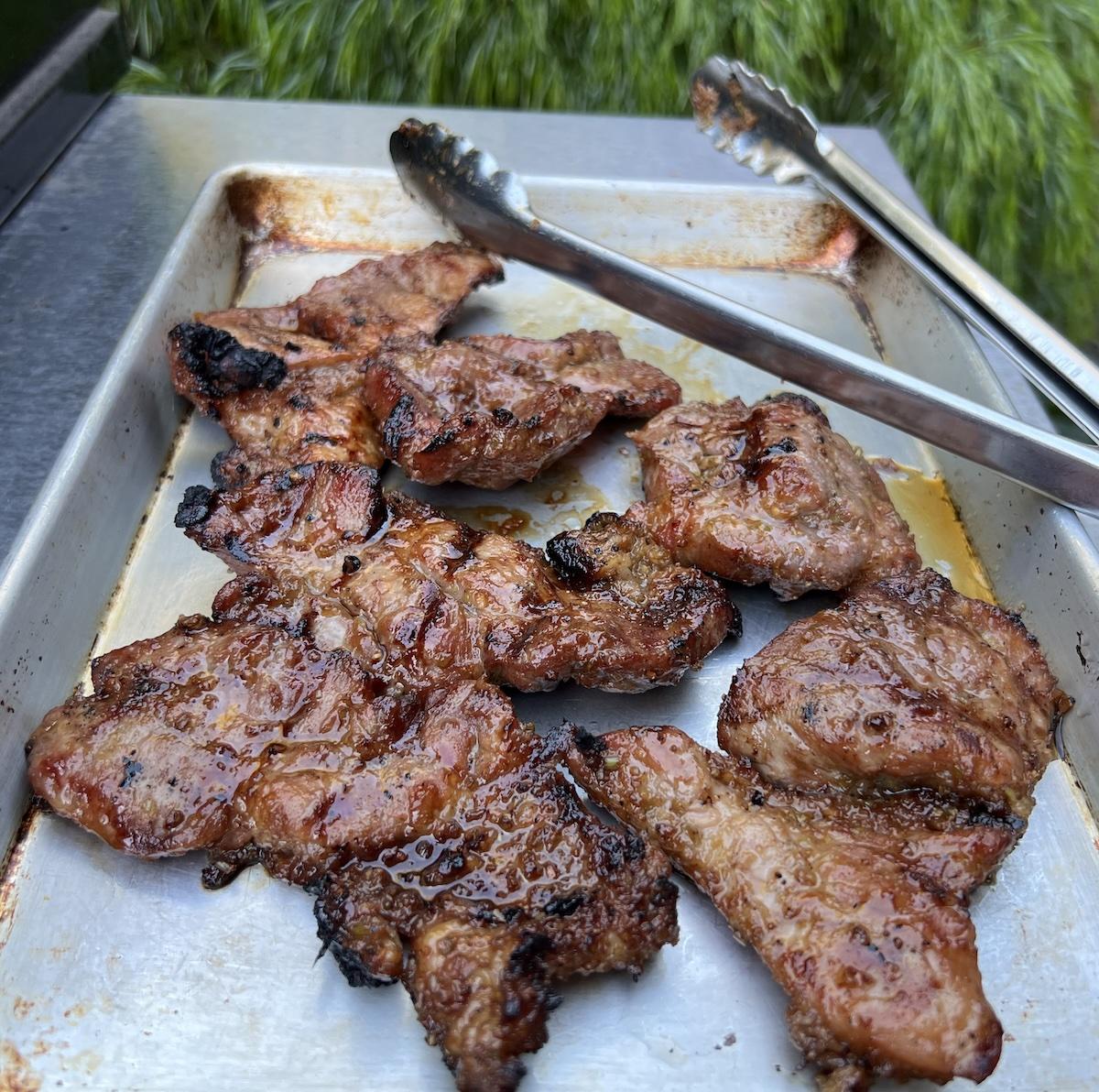Many years ago, a VWK visitor requested a recipe for the grilled pork that Vietnamese restaurants often prepare and serve with rice plates, featured in bun rice noodle bowls, and in banh mi sandwiches. In Vietnamese on restaurant menus, the pork is often called thịt heo nướng sả (lemongrass is spelled xả also).
I was hesitant because Viet restaurant food is generally a lot sweeter and saltier than homemade food. The reason? The bolder flavors get customers to drink and eat more; it’s a Pavlovian thing. People also love to indulge in big flavors when they go out, so it’s a push and pull dynamic with restaurant dining. Additionally, the cut of pork tends to be a very dry thin pork chop and the seasoning that sends it over the top is usually a smidgen of MSG.

But when you cook at home, you’re liberated. You can cook how you want, to produce your flavor profile. When I wrote this recipe up in 2009, I wanted to create a Vietnamese restaurant style lemongrass pork that I’d proudly serve my family and friends for years to come. The pork needed to be salty-sweet and aromatic with lemongrass and alliums (shallot and garlic).
Jump to:- Strategies for the best results
- Ingredient pro-tips
- Suggested tweaks and pairings
- Lemongrass pork how-to video
- Build out your meal
- Vietnamese Restaurant-Style Grilled Lemongrass Pork (Thịt Heo Nướng Sả)
Ingredient pro-tips
When you start in on making this recipe, note the following:
- The signature lemongrass flavor is best from fresh or frozen stalks. If you’re unsure about using lemongrass, be sure to check the Lemongrass 101 article for tips. If you’re interested in growing lemongrass, check in with this post.
- Lots of sugar is used but it's done judiciously. Brown sugar is the way to go. Use light palm sugar and your pork steaks will sing high Viet notes. As a last resort, use white granulated sugar.
- Soy sauce adds color here, and if you use dark (black/thick) soy sauce (called hac xi dau in Vietnamese), the meat will take on a mahogany cast.
- Fish sauce add umami depth without colorant so the pork won’t burn up.
Slicing the pork at the end is a traditional Vietnamese approach to eating meat as the pieces are easier to pick up with chopsticks. Enjoy with rice, a stir-fried or grilled vegetable and a quick soup (canh). Feel free to stuff leftovers into banh mi sandwiches and use them for bun rice noodle salad bowls.
Lemongrass pork how-to video
For a summary of how the recipe comes together, watch this video. Remember to select "stay" when prompted!
Build out your meal
Add a pickle or vegetable side to round things out! Among my favorites any time of year are these:
